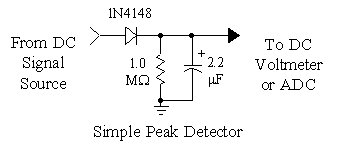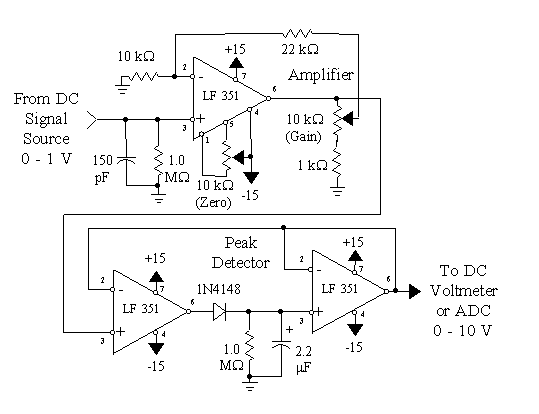
Safety
First a word about safety. Many things which need to be done to get set up to do radio observations of meteors MUST be done by a certified electronics technician; namely, someone who has learned how to work with electrical equipment without getting injured, or worse. When you start poking around inside a radio you had better know what's going on. My daughter necessarily deferred many things to me, since I've had an FCC General Radiotelephone Operator License for more than thirty years. Some of your neighbors may be amatuer radio operators, and in my experience they are very helpful people. Nearly every county in the US has an amatuer radio club, and if you show up for one of their meetings or hamfests, there will be many people who will offer assistance. You can search the American Radio Relay League web site (ARRL) for a nearby club.
Likewise, your local TV/VCR repair shop may be able to make modifications for you for a small price. The advantage here is that they can often get the schematic diagrams of your particular radio from a schematic service.Installing antennas on the roof is another matter of concern. Aside from the obvious hazard of falling, there is a problem with the power lines which come into your house. Antennas are large objects which are hard to handle, and they are also conductive. If you drop one on a power line while holding it - ZAP! When installing antennas, read the manufacturer's warnings. In some locations, lightning strikes to antennas are common. The manufacturer's instructions for both the radio and antenna have advice on these matters. A very good source of safety information is the ARRL Handbook which is offered for sale at most radio shops, or it can be obtained via mail order.
FM Tuner
The FM tuner we used was a Yamaha TX-480 FM tuner, which has a 1.55 microvolt sensitivity. This radio was selected primarily because it has a signal strength meter, and I thought I could tap into this for our signal strength voltage. Another reason it was selected was that it was a floor demo missing operating manual and AM loopstick antenna and was offered to me for less than $100.
When I opened the case, I was surprised to see that the insides were mostly empty. Things are so highly integrated nowadays that a superb FM tuner can be made with just a few chips and a power supply. I was pleased to see that the circuit board was labeled (in English) and I could find the lead to the front panel signal strength meter. This supplied up to four volts for the strongest stations, but it was a very high impedance source which needed a buffer amplifier (see below).
The tuner also had a generous number of presets (40 in all) selected by some front panel push buttons. I found that open collector logic placed in parallel with the buttons to shunt them to ground gave me a remote control of the presets. This was useful for the automated spectral survey by which my daughter was able to find a clear frequency to monitor.
Many radio meteor observers use communication receivers which allow them to defeat the AGC (automatic gain control function) to get a linear signal response. FM radios have over-driven IF amplifiers which act to compress the stronger signals while keeping sensitivity high so that you can hear the weaker stations. A strong meteor reflection produces a signal as strong as a local station, so we didn't view this peak compression as bad.
Antenna, Rotor and Antenna Amplifier
The antenna we used, the Radio Shack 15-2163 High Gain FM-stereo antenna, was not particularly sensitive or directional. One disadvantage was that its rejection of signals coming from the rear was not that good. This fact eliminated more than one possible monitoring frequency. It did offer some gain, and we didn't need to use an antenna amplifier. The antenna was mounted on the roof of our house on a rotor (Radio Shack 15-1225 Antenna Rotor). After a monitoring frequency was selected, the rotor didn't have much use.
We tried an antenna amplifier, but all this did was to increase the baseline noise level. As I mentioned above, meteor reflections produce as strong a signal as a local station, so unless you have an especially insensitive FM radio, you don't need an antenna amplifier.
Computer Data Acquisition
We built our own analog to digital converter, but only because we had developed the circuitry and software for another project. It is better to buy than build, since inexpensive units are available. B&B Electronics sells some inexpensive analog to digital converters which plug into the serial port of a PC. They include some example programs in Basic. DATAQ Instruments sells slightly more expensive analog to digital converters compatible with the PC serial port, but they include a windows-based program (WINDAQ/Lite) for logging data. Radio Shack and Jameco Electronic Components sell multimeters with serial computer interfaces and software. The only problem here is that they are battery powered.
We took data at one second intervals (see peak detectors, below), storing the data in memory, and then writing to a file every hour. Each hour's data was written to an individual file, which made analysis easier. The file names were constructed to contain the date and hour (12010600.TXT = 6AM on December first). The files were written in ASCII so they could be read by almost any program (spreadsheets, plotting programs, etc.). We didn't log the times, which were obvious from the file name and the once per second data interval. We did lose two seconds at the start of each hour while the data was being written to the hard disk. Since each data record was up to four ASCII digits, a carriage return, and a line feed, each hour's file occupied about 18 - 22 kb. Here's an example file, 11170300.txt. This is an excellent application for older PCs. All data were collected on a 33 MHz 386 system running Windows 3.1.
Peak Detectors
At FM radio frequencies, meteor scatter signals are generally less than a second in duration. Many radio meteor observers take data at very high rates (> 10 readings per second) to catch as many meteors as possible. Of course, logging all this data to a hard disk would be difficult, so they use real-time analysis software to determine whether an event is meteor scatter, and then log only the relevant features of the scatter.
Although fast data collection is a requirement for a real scientific investigation, our object was to just count meteors, so we used a simpler scheme. We wanted to log data at one second intervals to a hard disk for later, off-line, data analysis, but we didn't want to miss any meteors. We used a peak detector circuit to capture even the fast meteors. The following circuit is a simple peak detector which will work with low impedance signal sources and high impedance voltmeters or analog to digital converters.

One problem with this simple circuit is the voltage drop of the diode. Silicon diodes, at all but the smallest currents, will only pass voltages greater than about 0.7 volts, so you'll lose some signal at the low end. Since this is usually just background noise, it's not really a problem. The signal voltage from our FM tuner was a high impedance source, so we couldn't use the simple peak detector. Instead, we used the following circuit.

This circuit gives you a high impedance input which won't load down your signal source and some gain. It also puts the diode in a feedback loop to eliminate the problems with the forward drop. Although we used a +/- 15 volt power supply, +/-12 volts would be adequate.
Software
Some of the analog-digital converters you can buy have their own data logging software. Unfortunately, most of these create data files which use a lot of disk space. We started out with one of the serially interfaced multimeters (Metex), and although it had a nice graphical interface, the data files were quite large since it logged time and other parameters. We wrote our own software in Visual Basic. Since this was coded for the unique analog-digital converter we built, the object code would not be useful. However, some of the source code is described on this page.
Technical questions can be addressed to Devlin Gualtieri, at Honeywell Laboratory, Morristown, NJ.